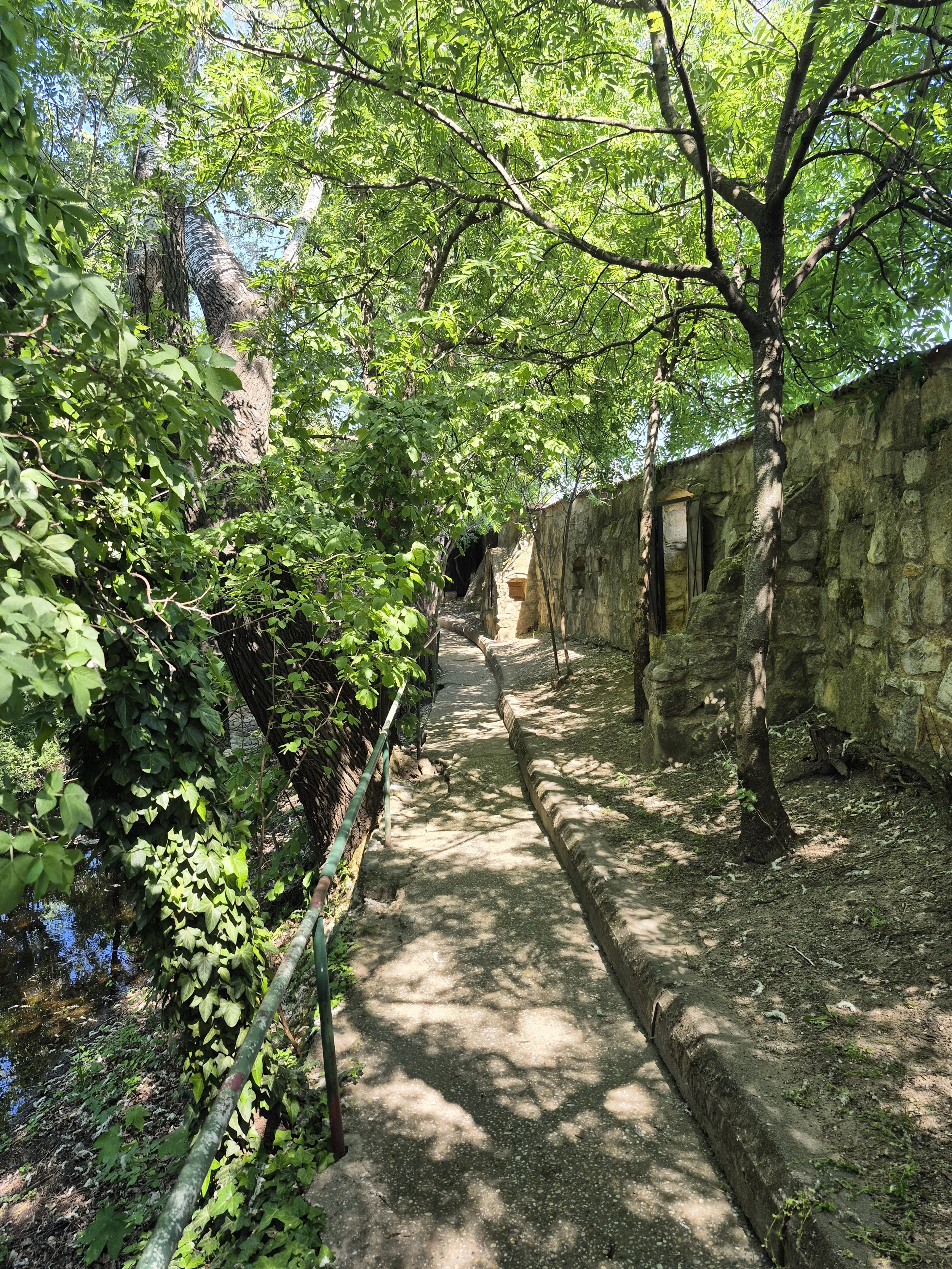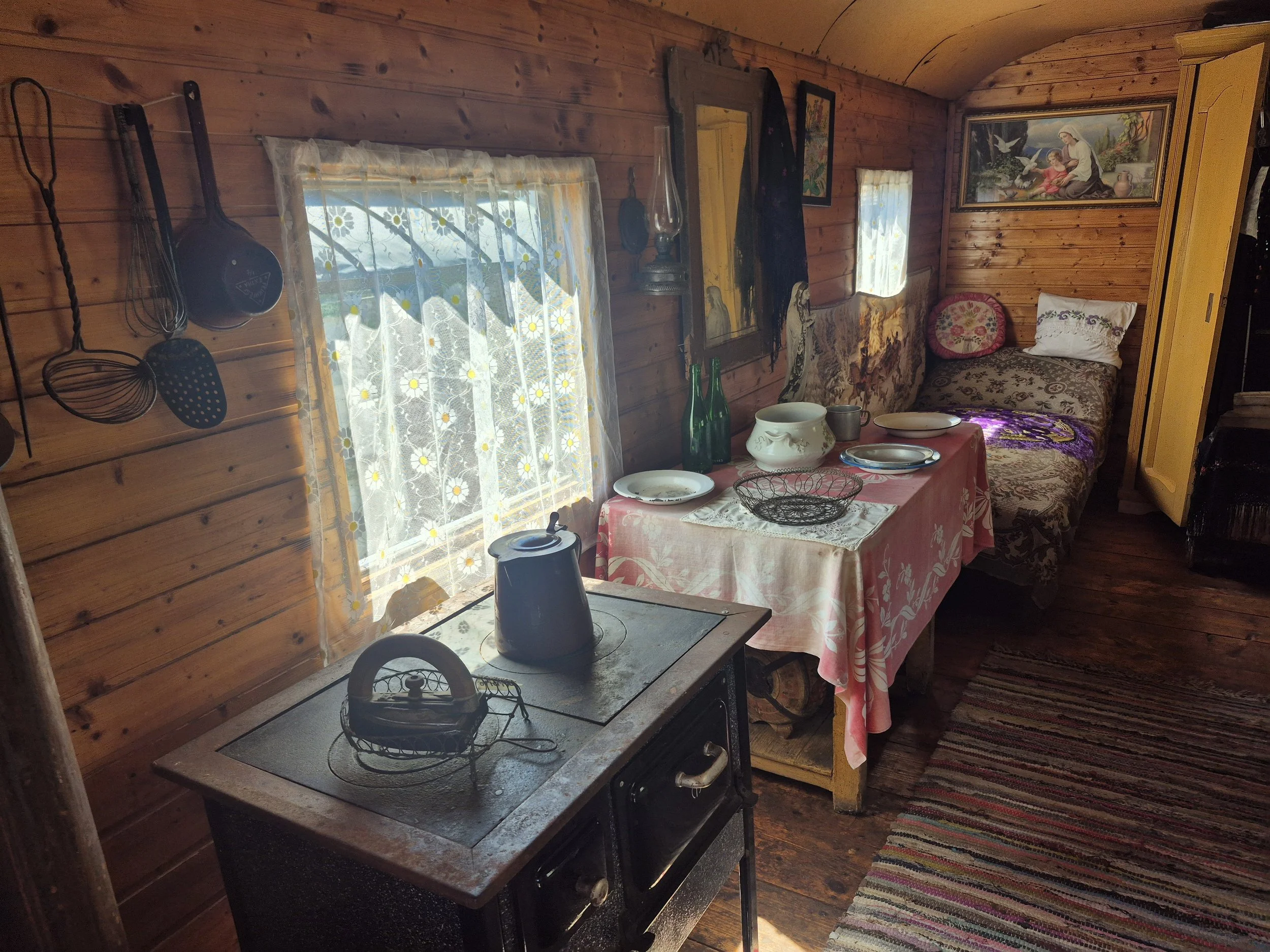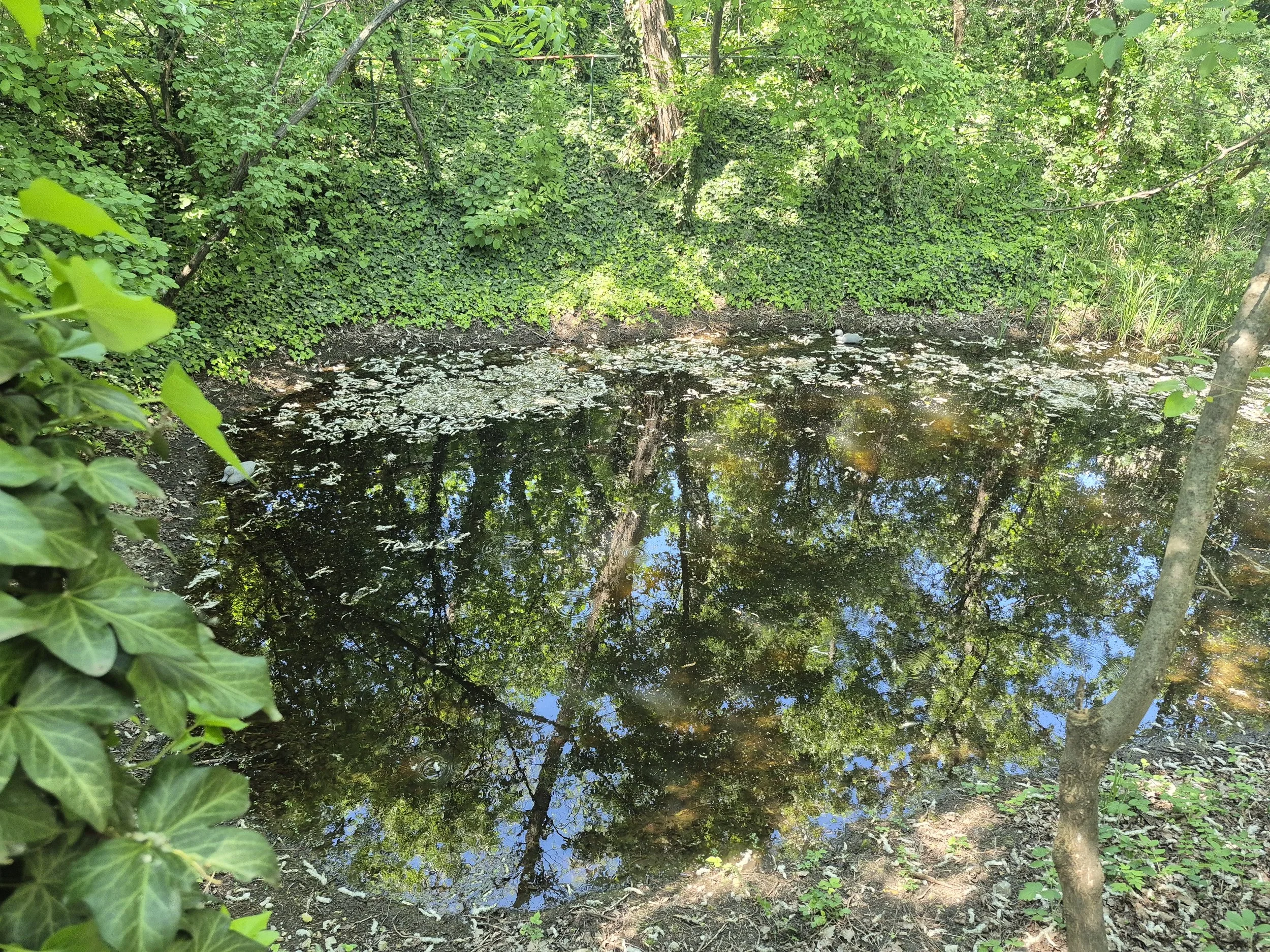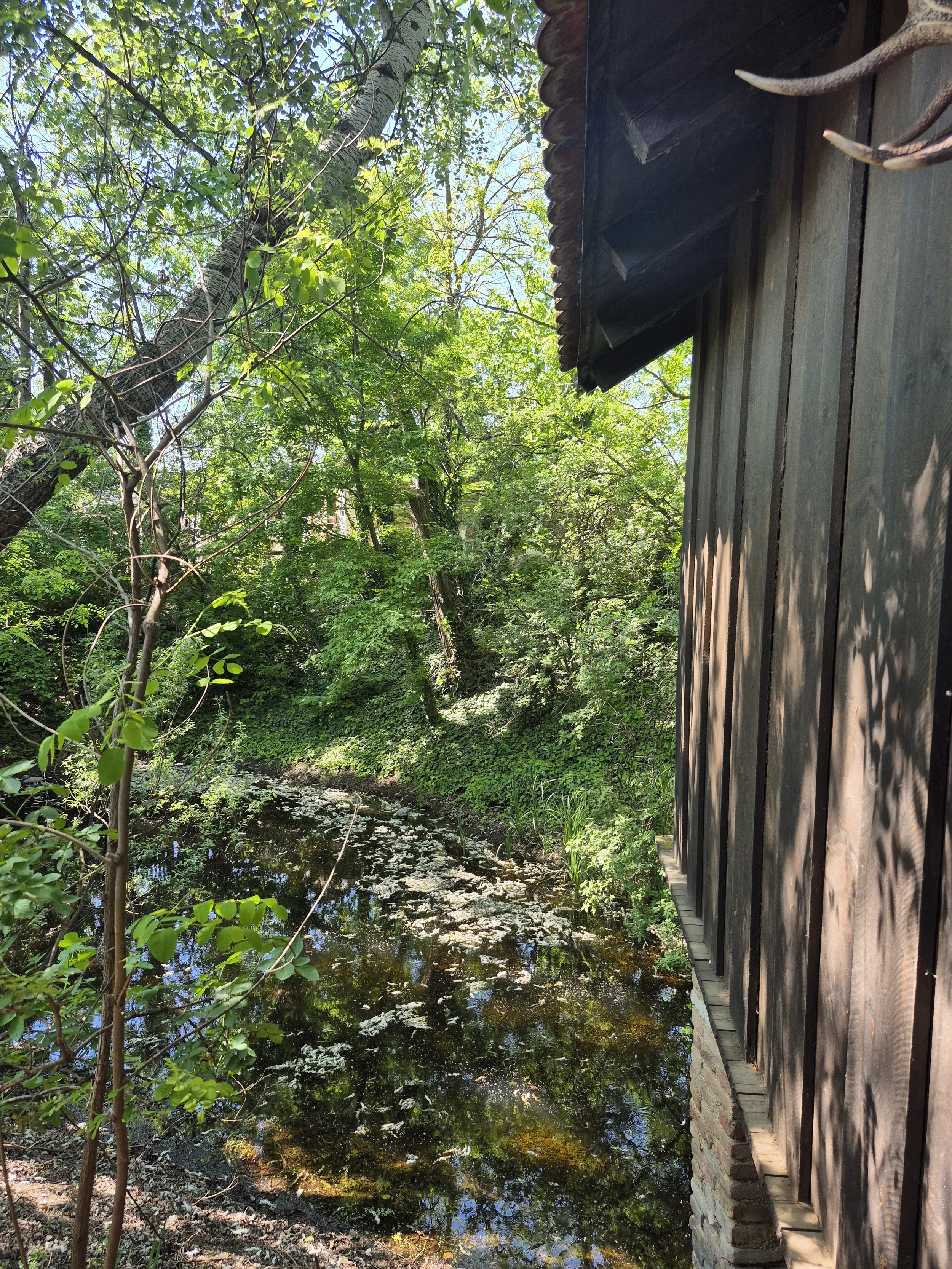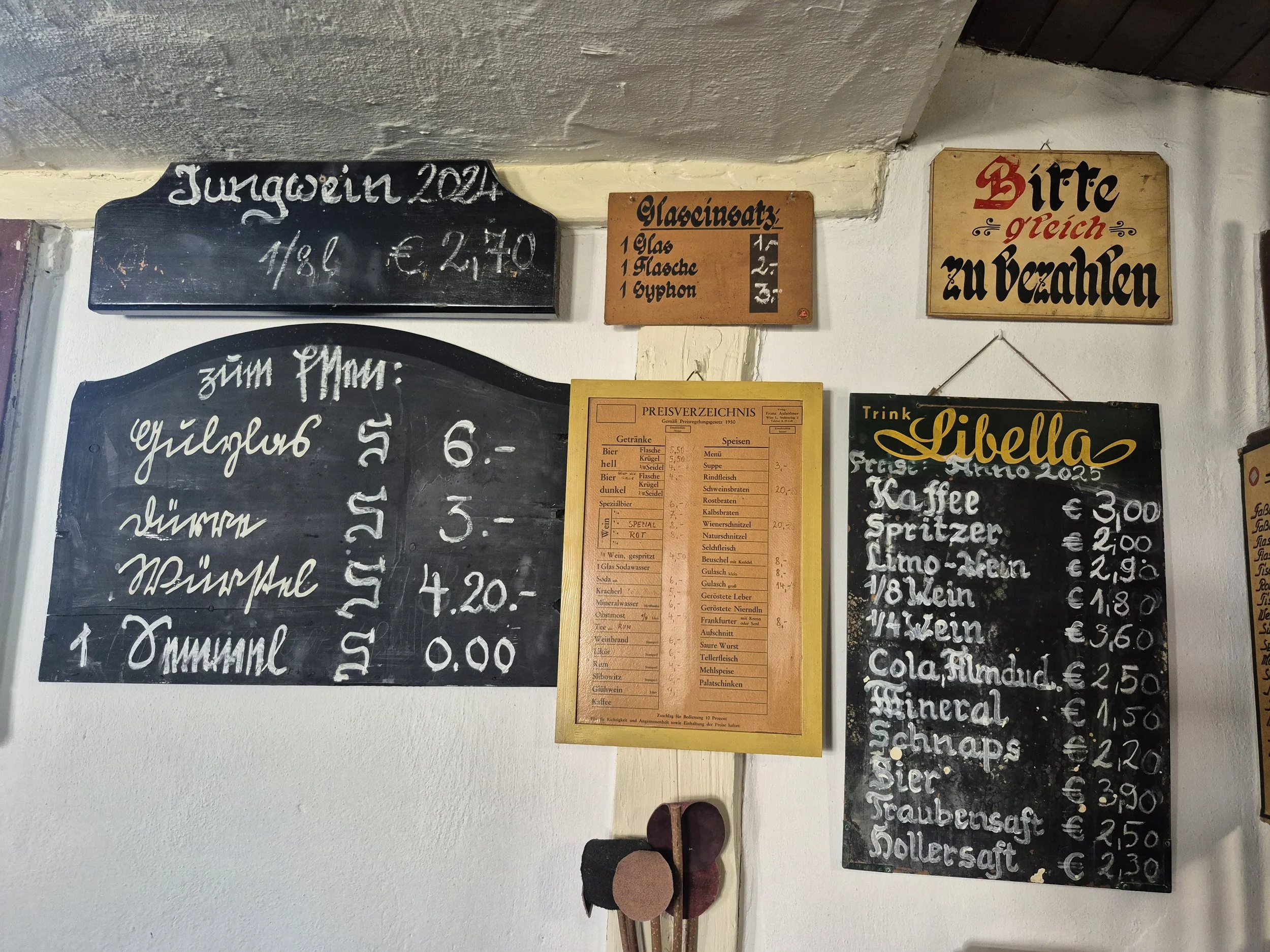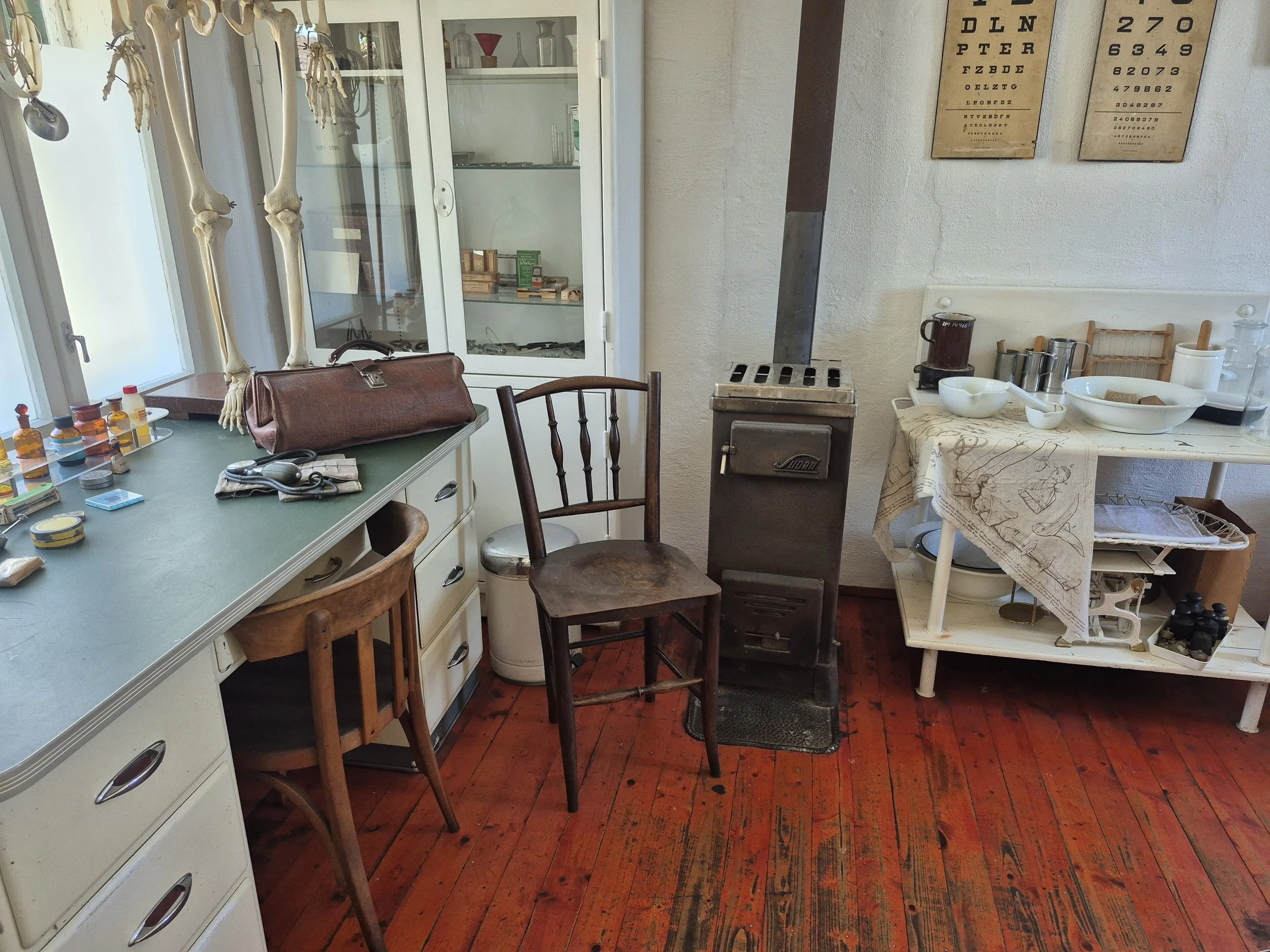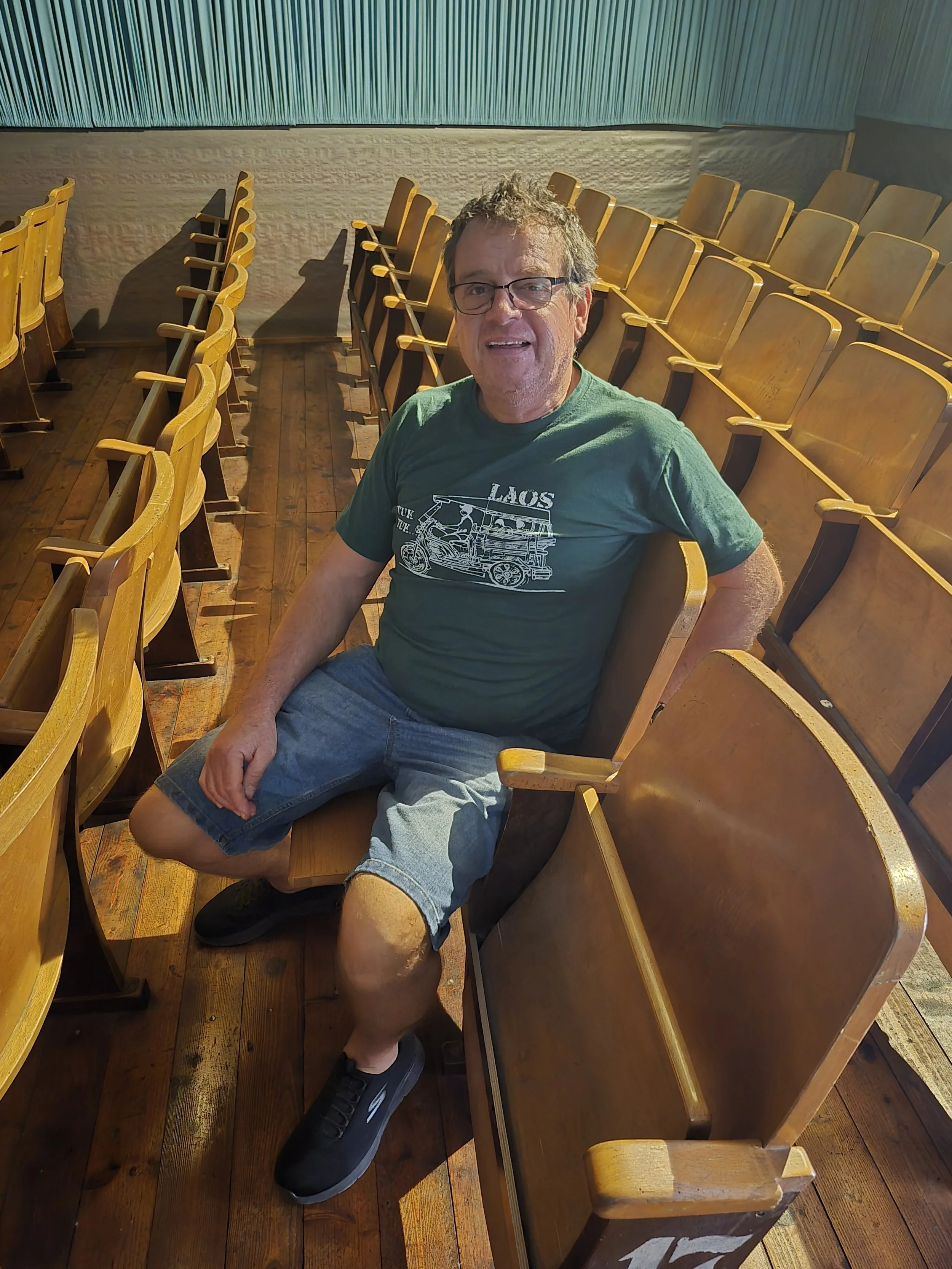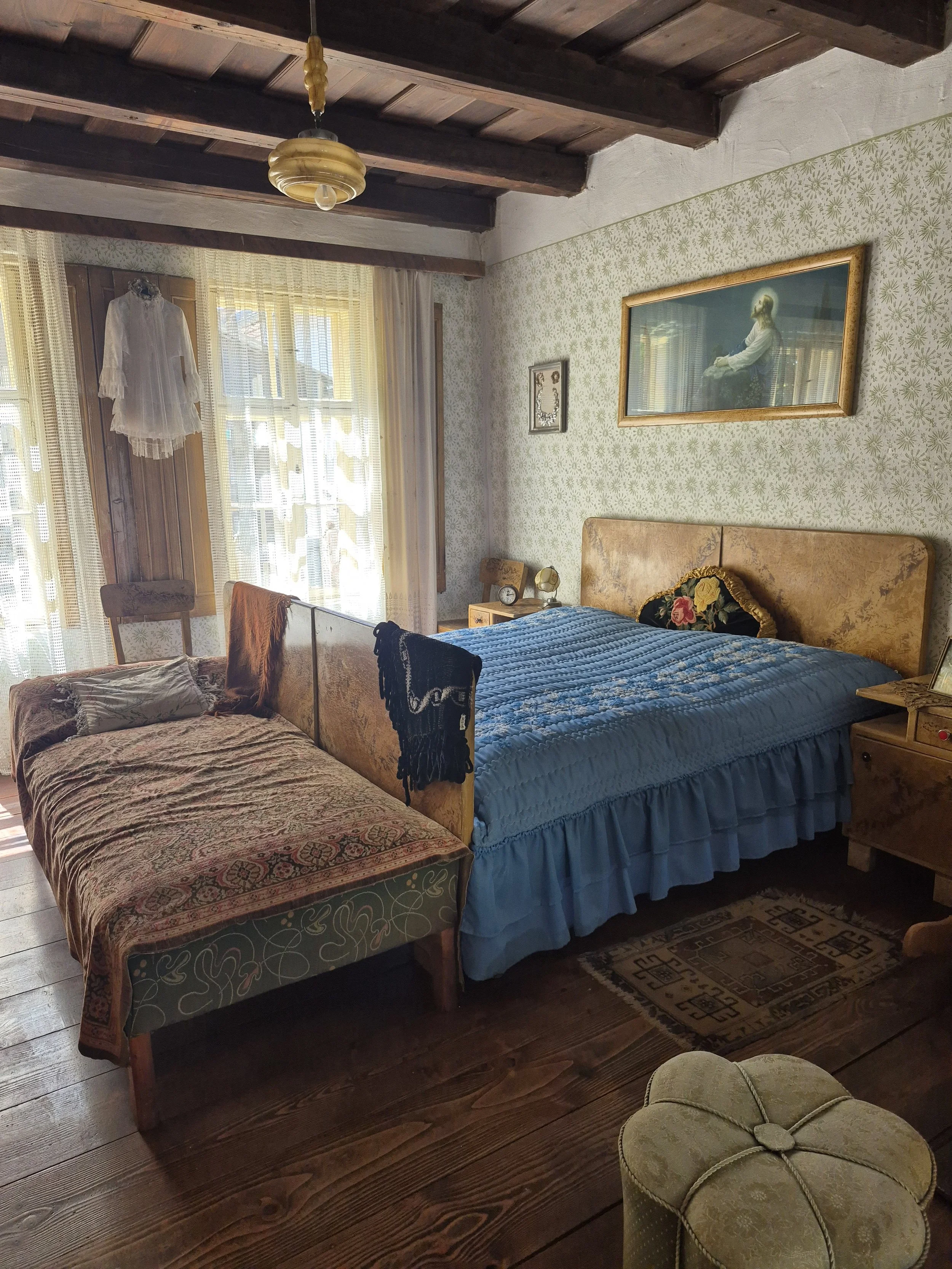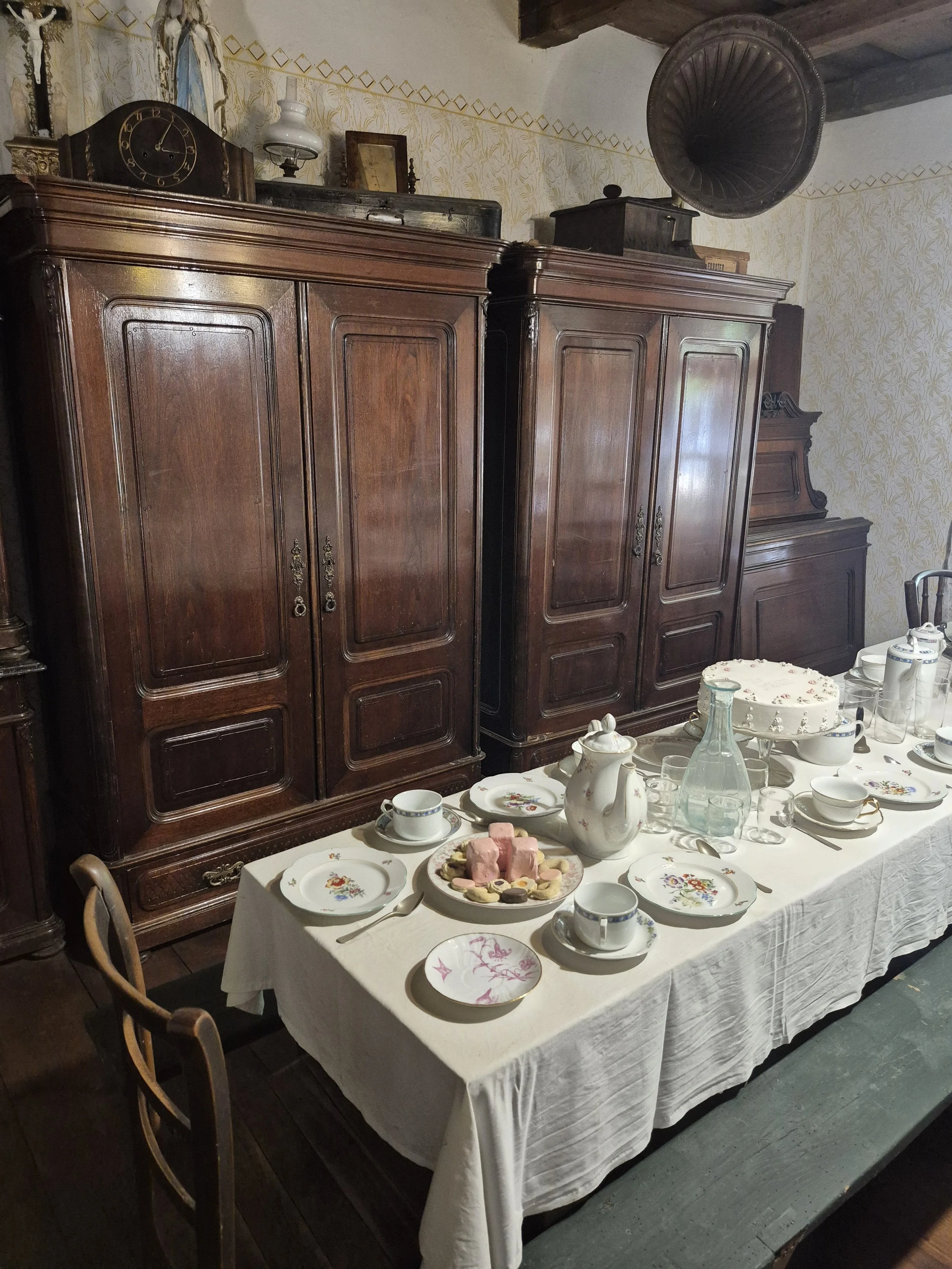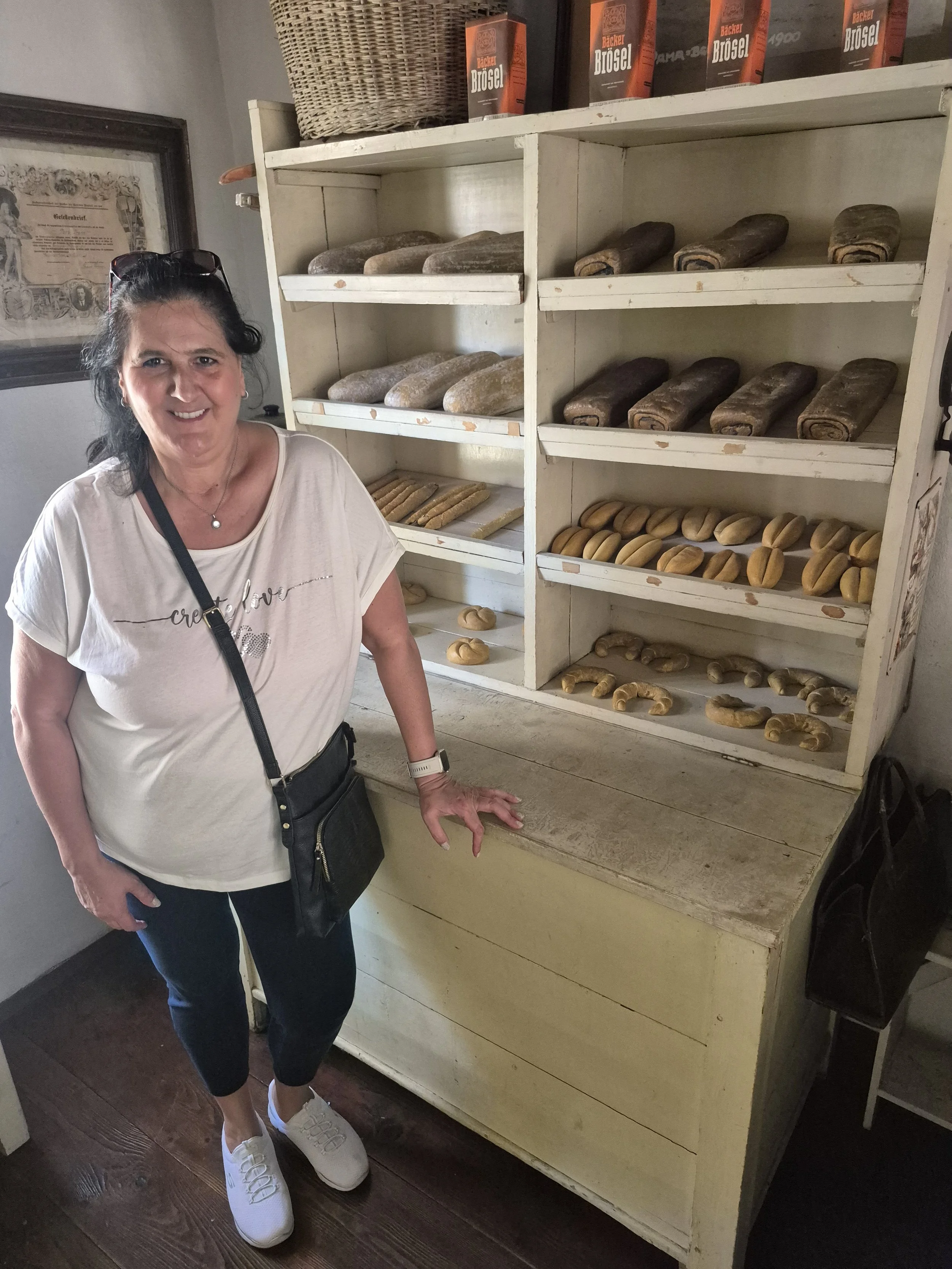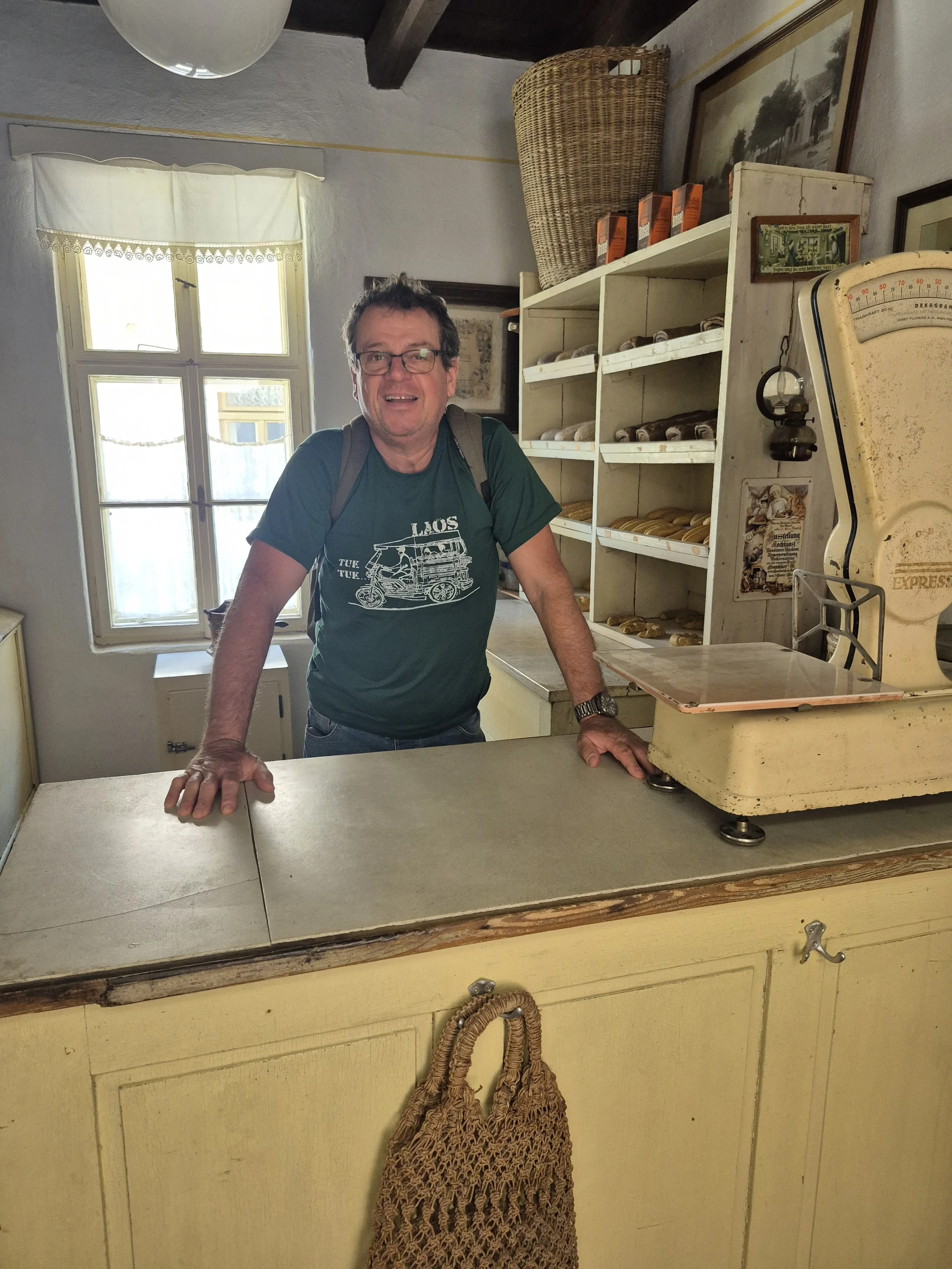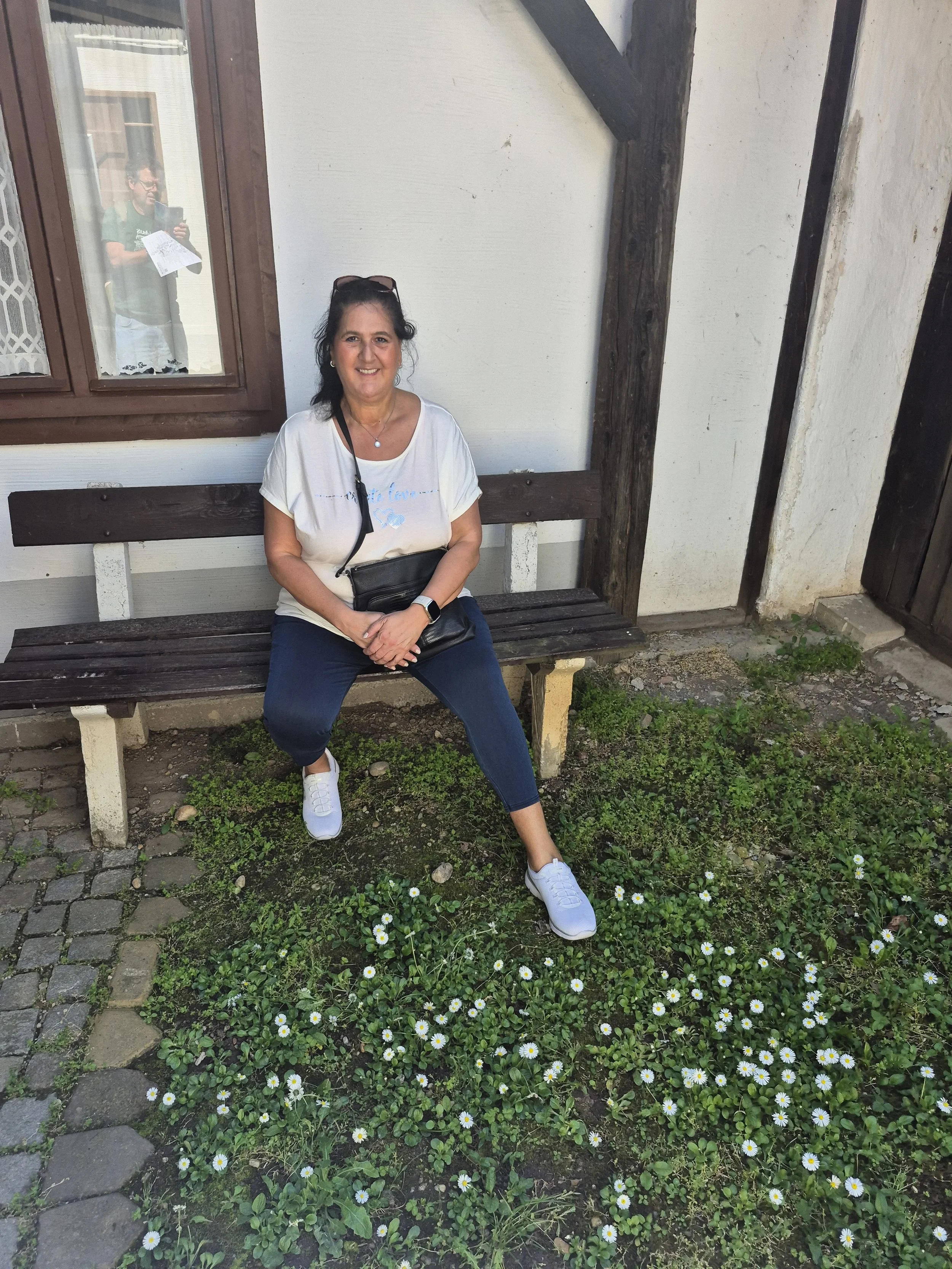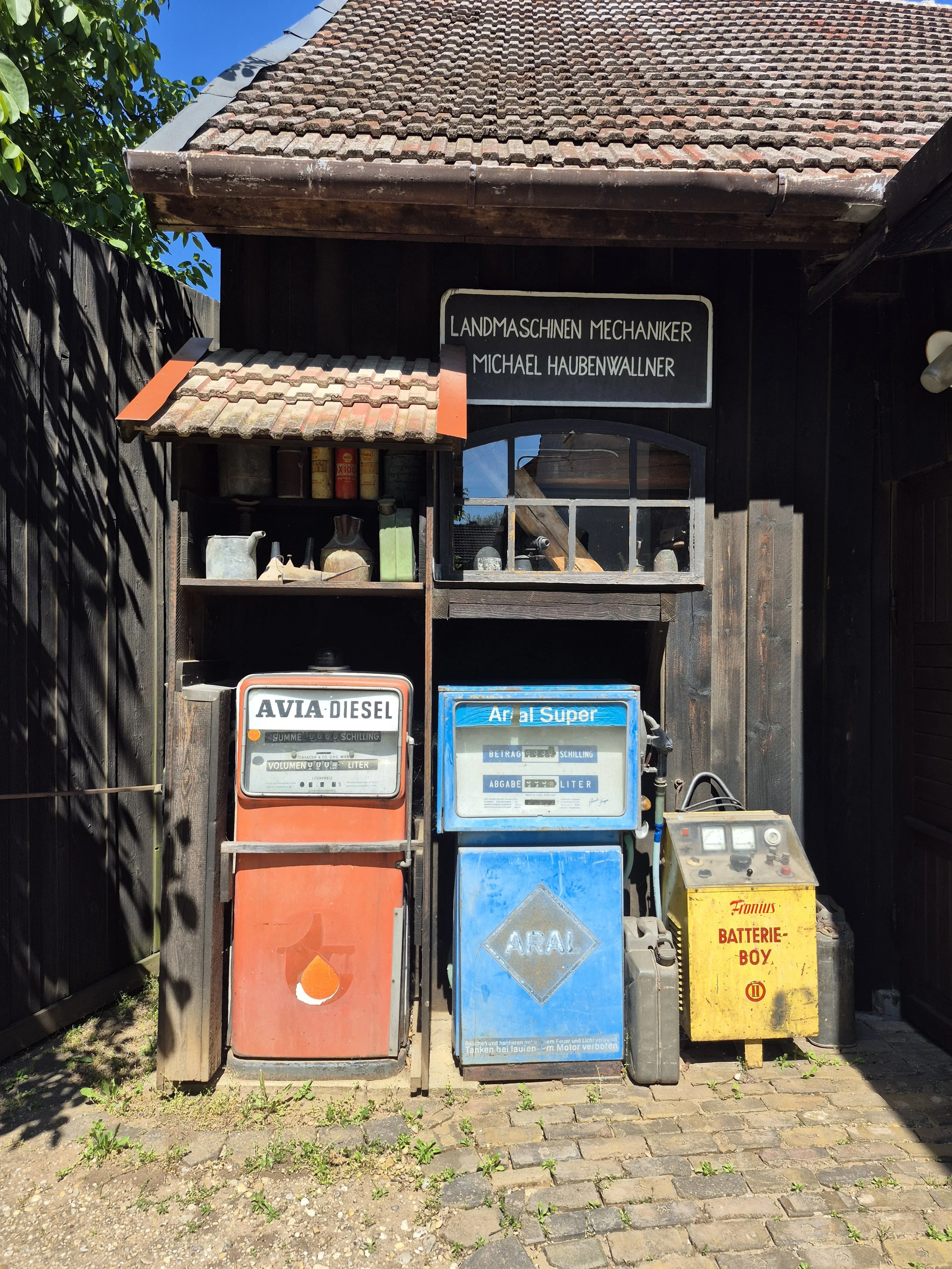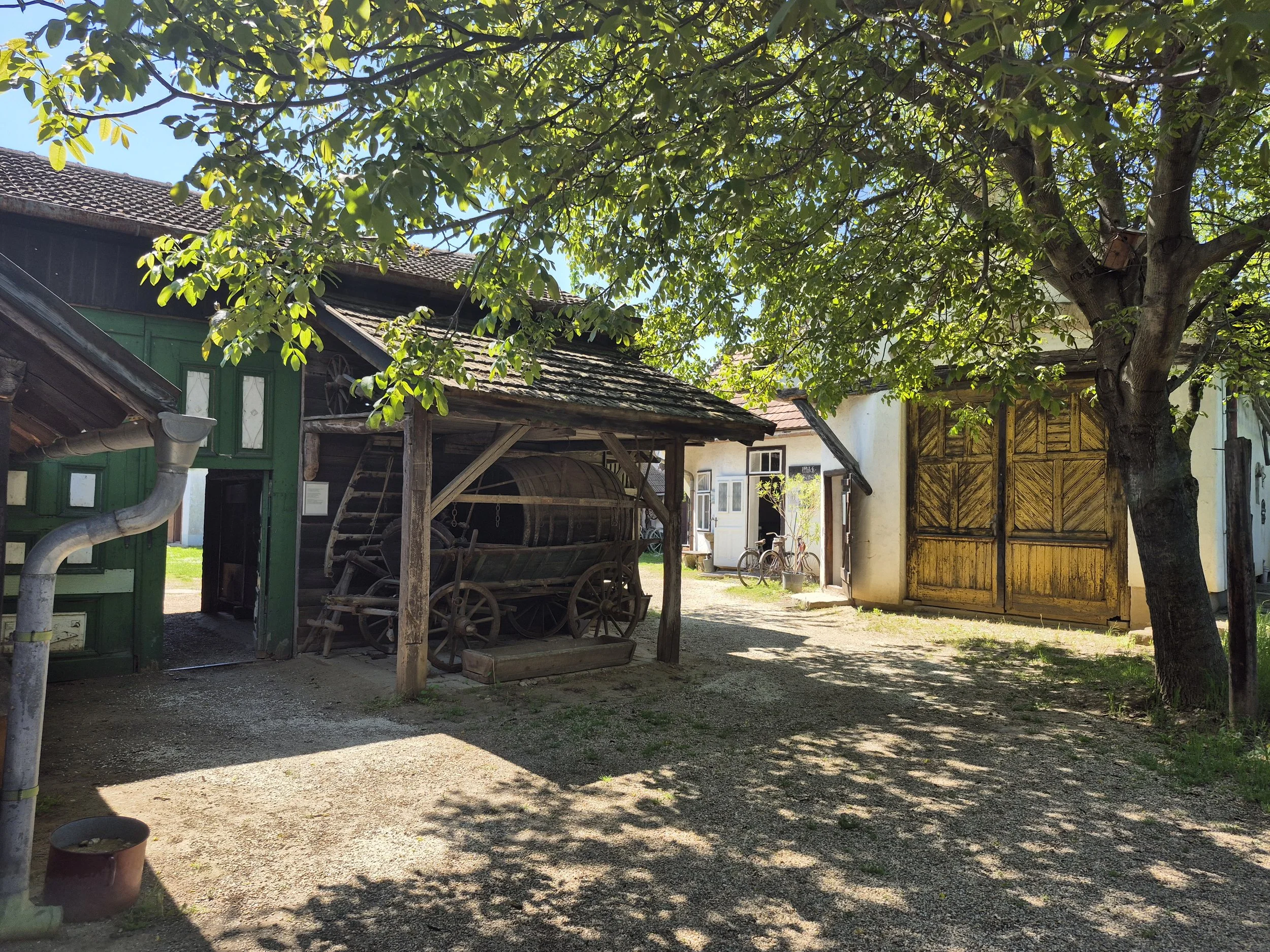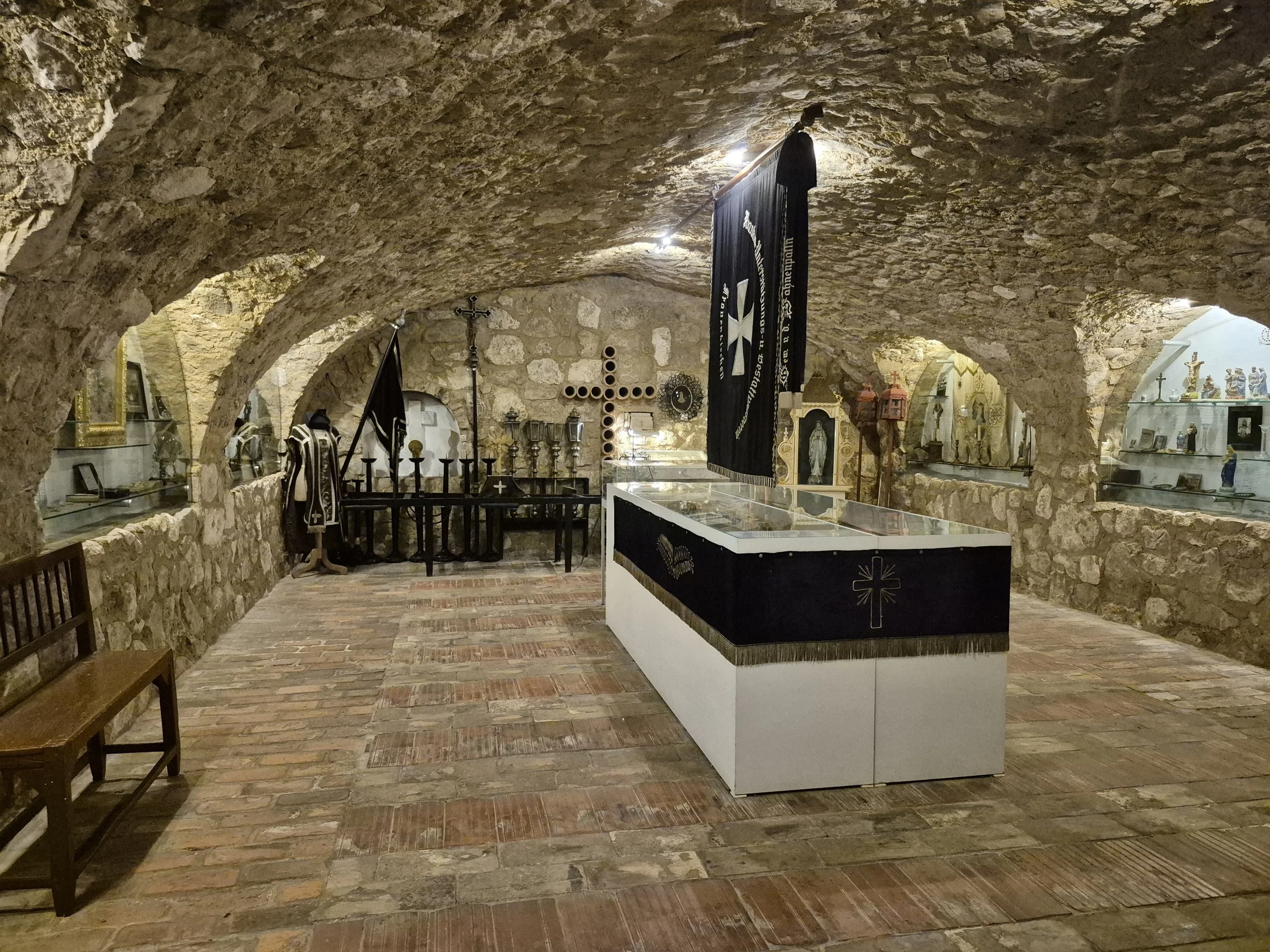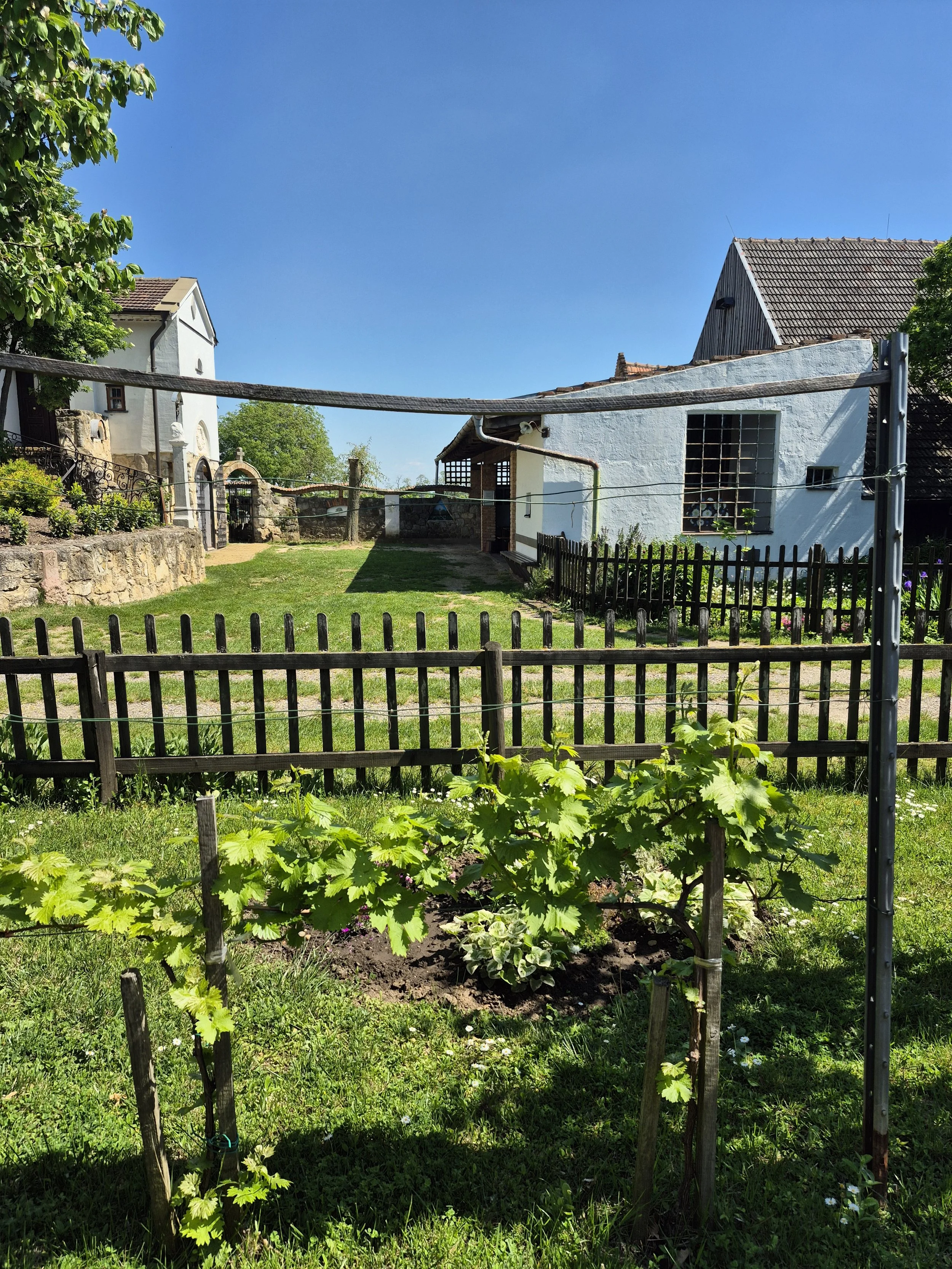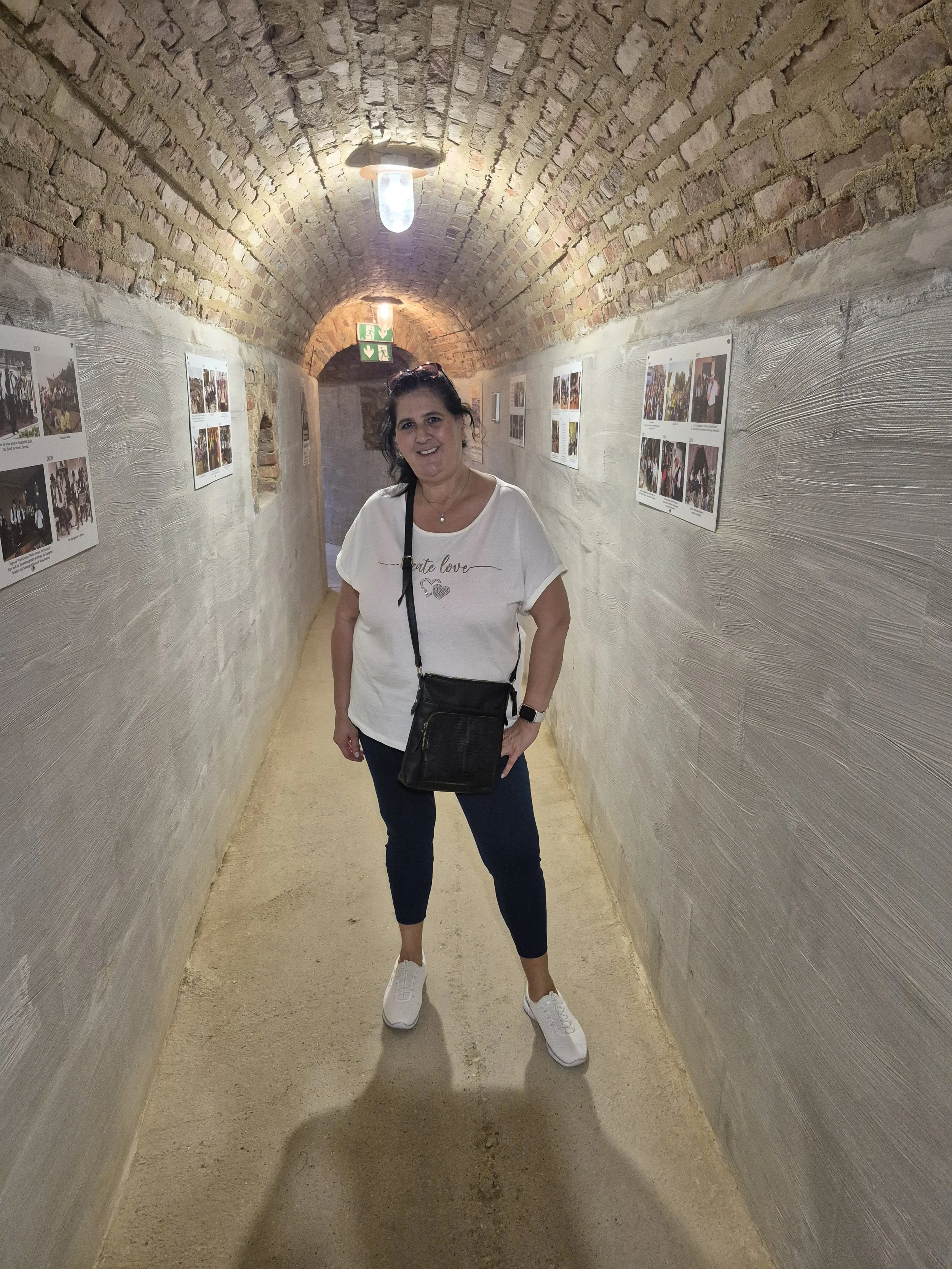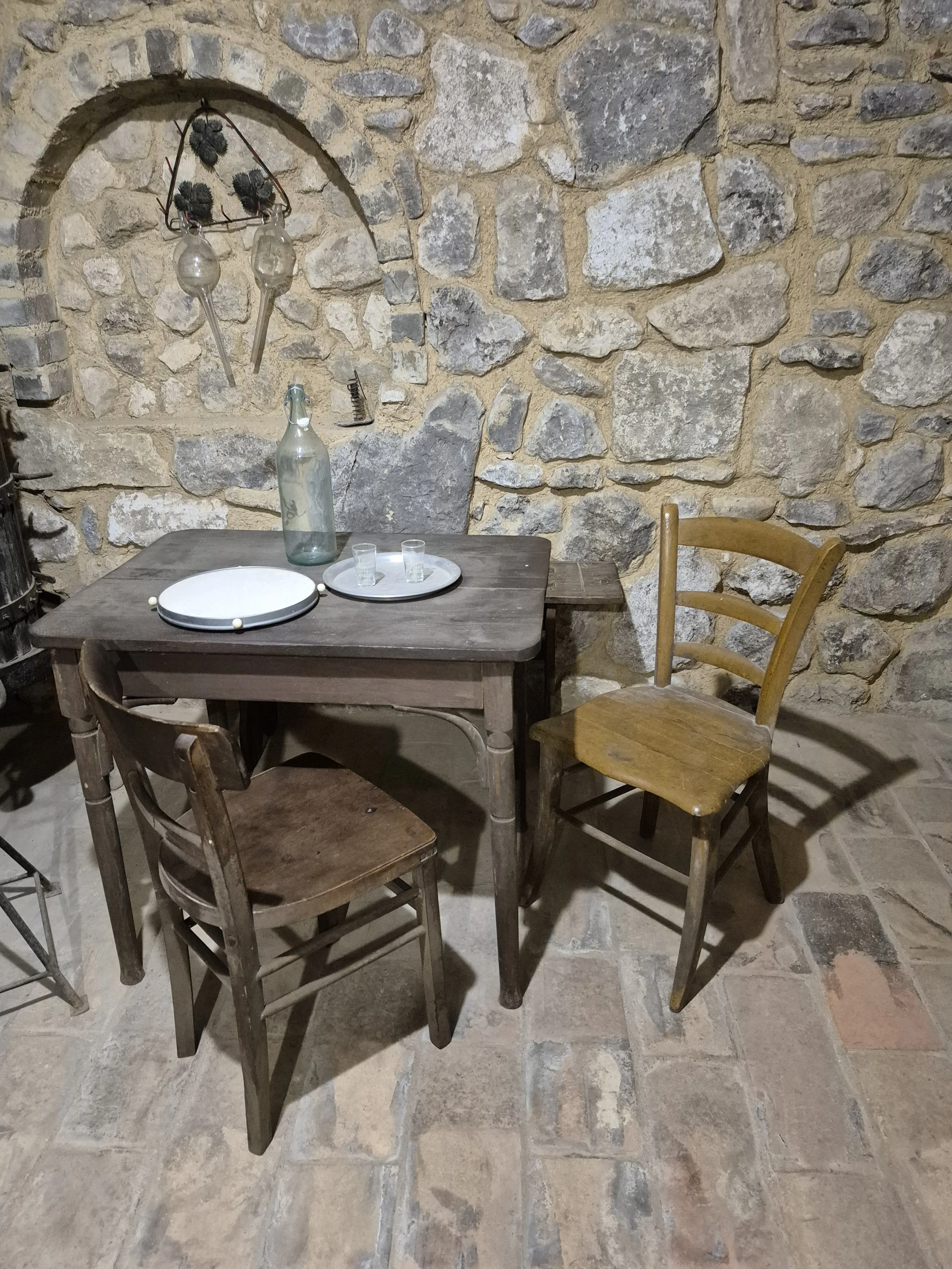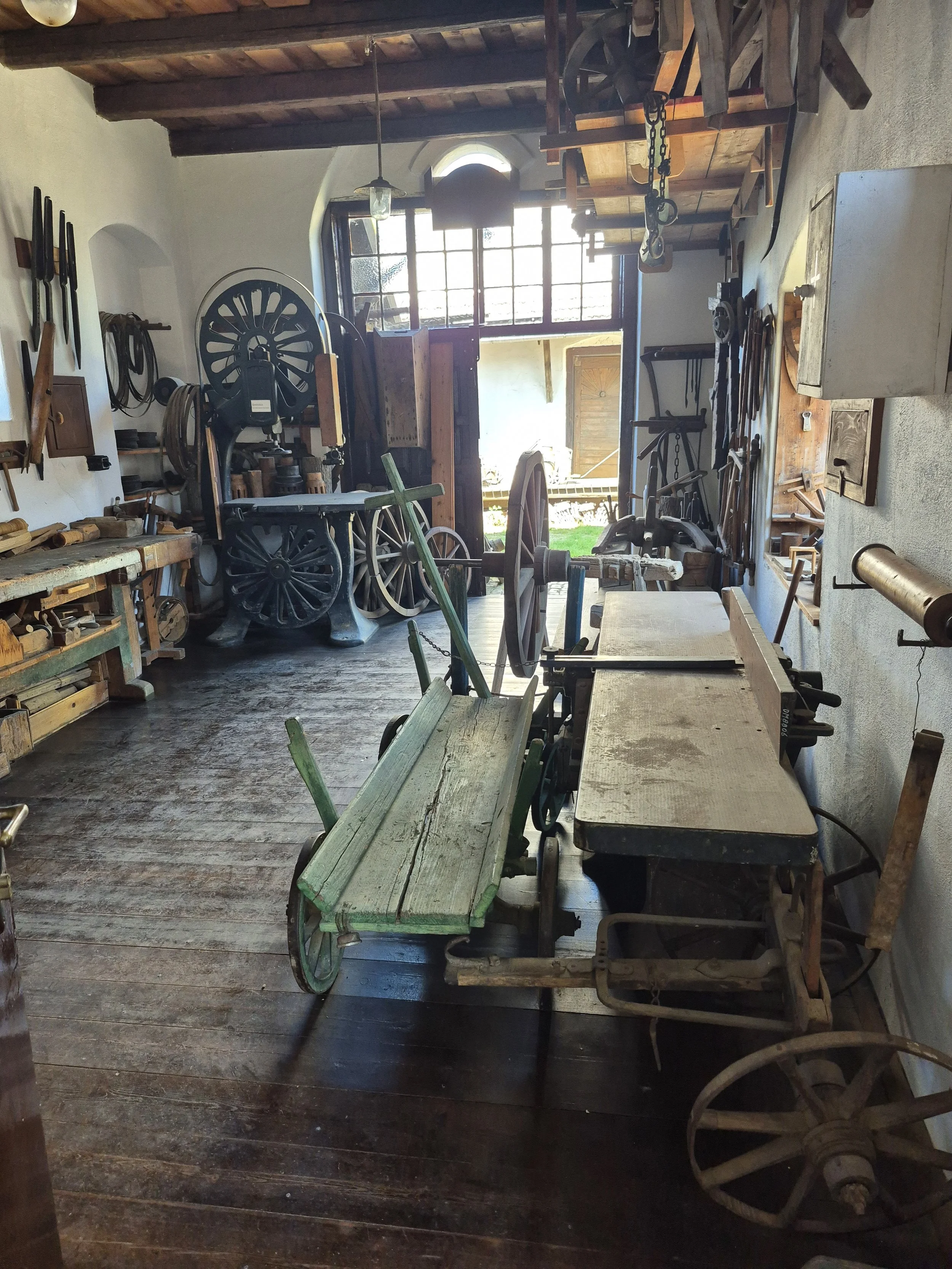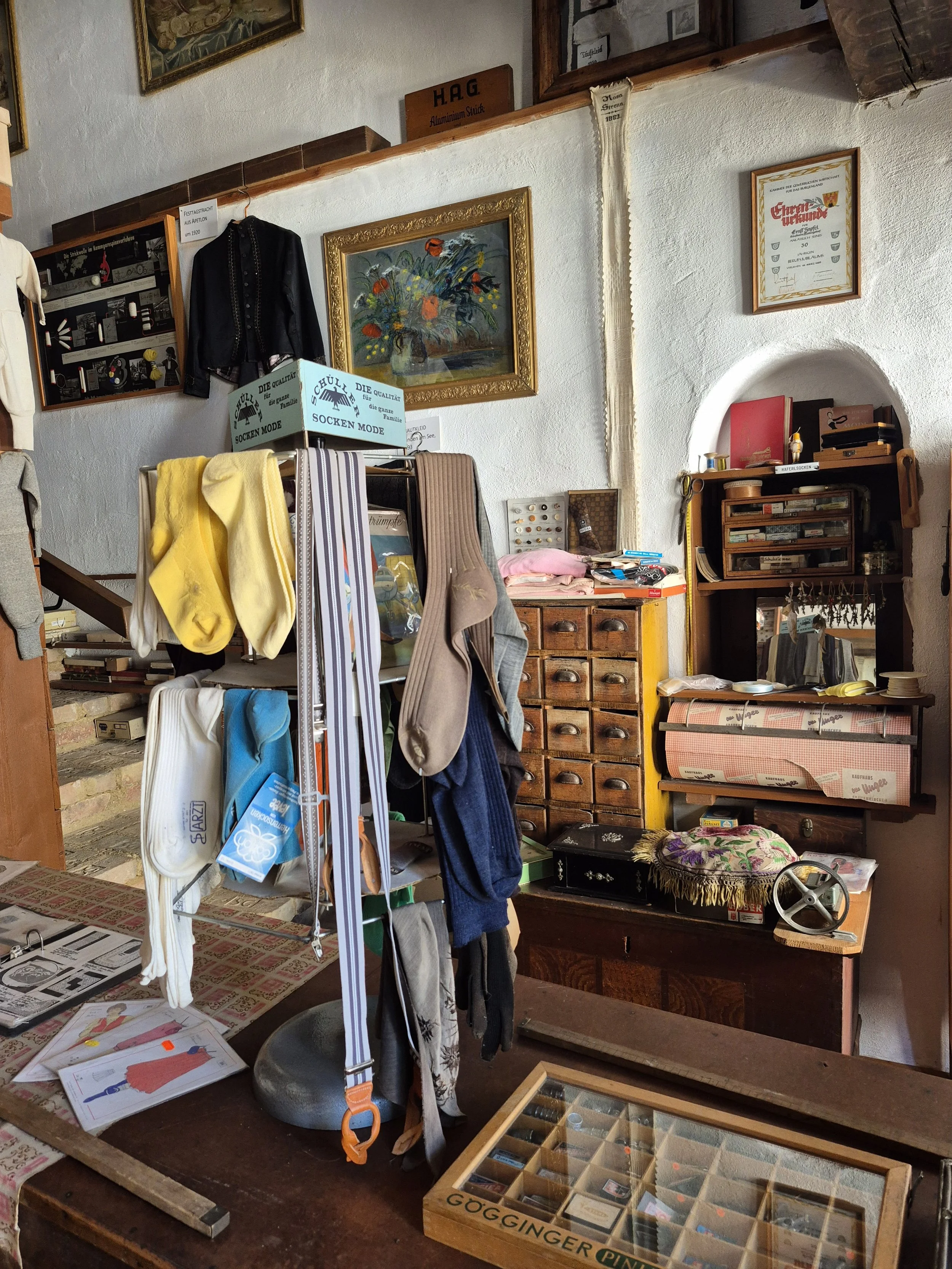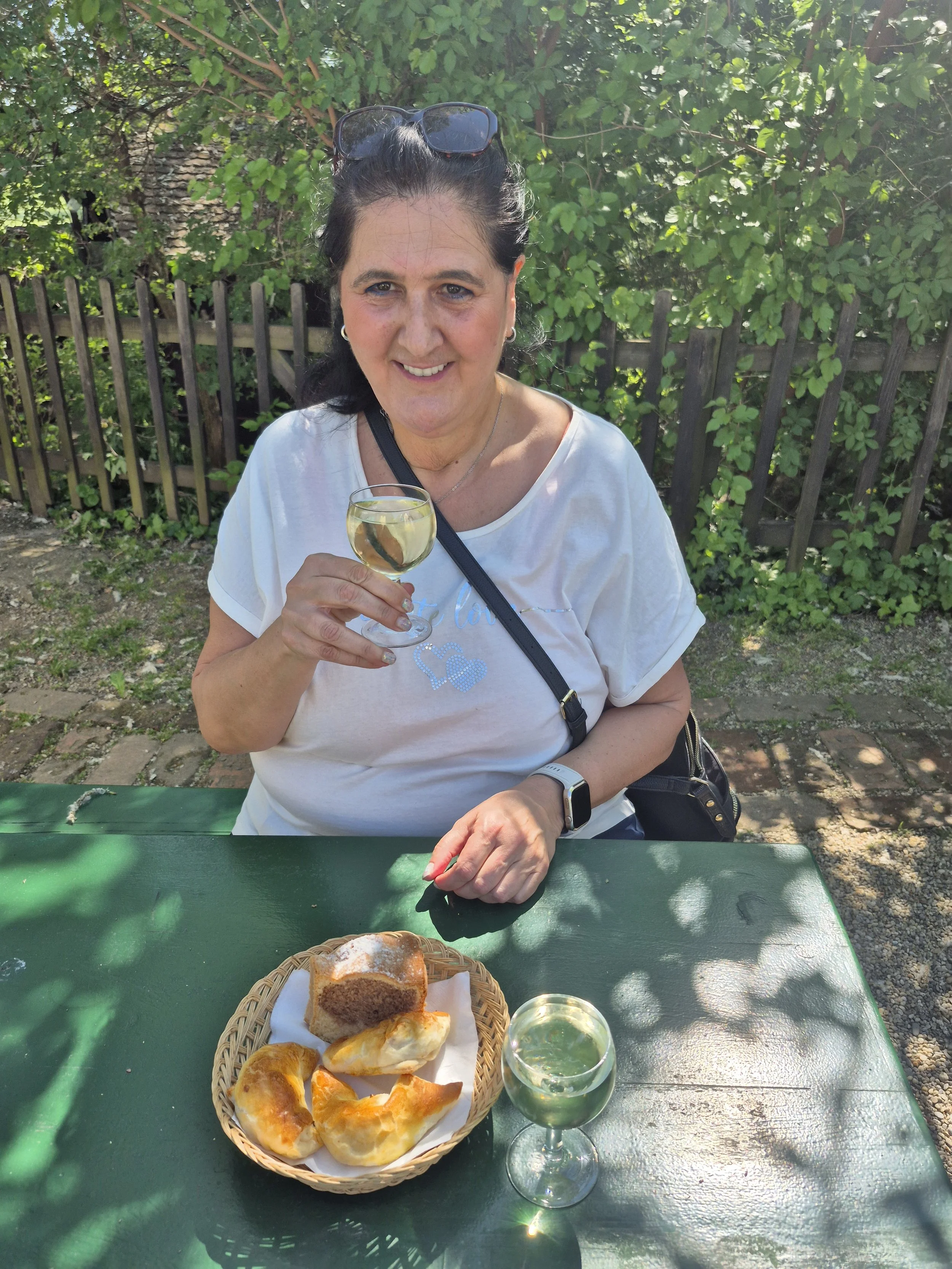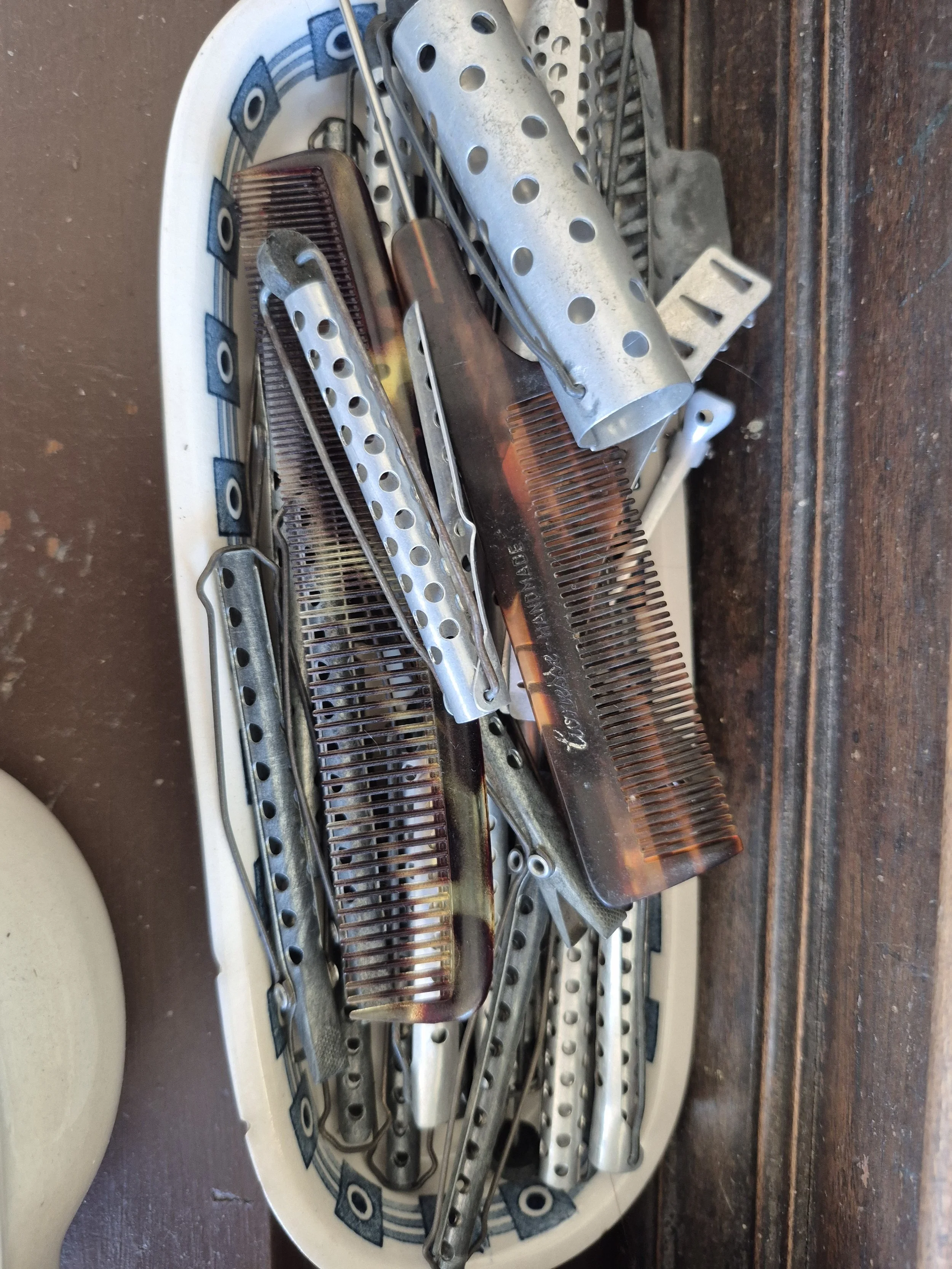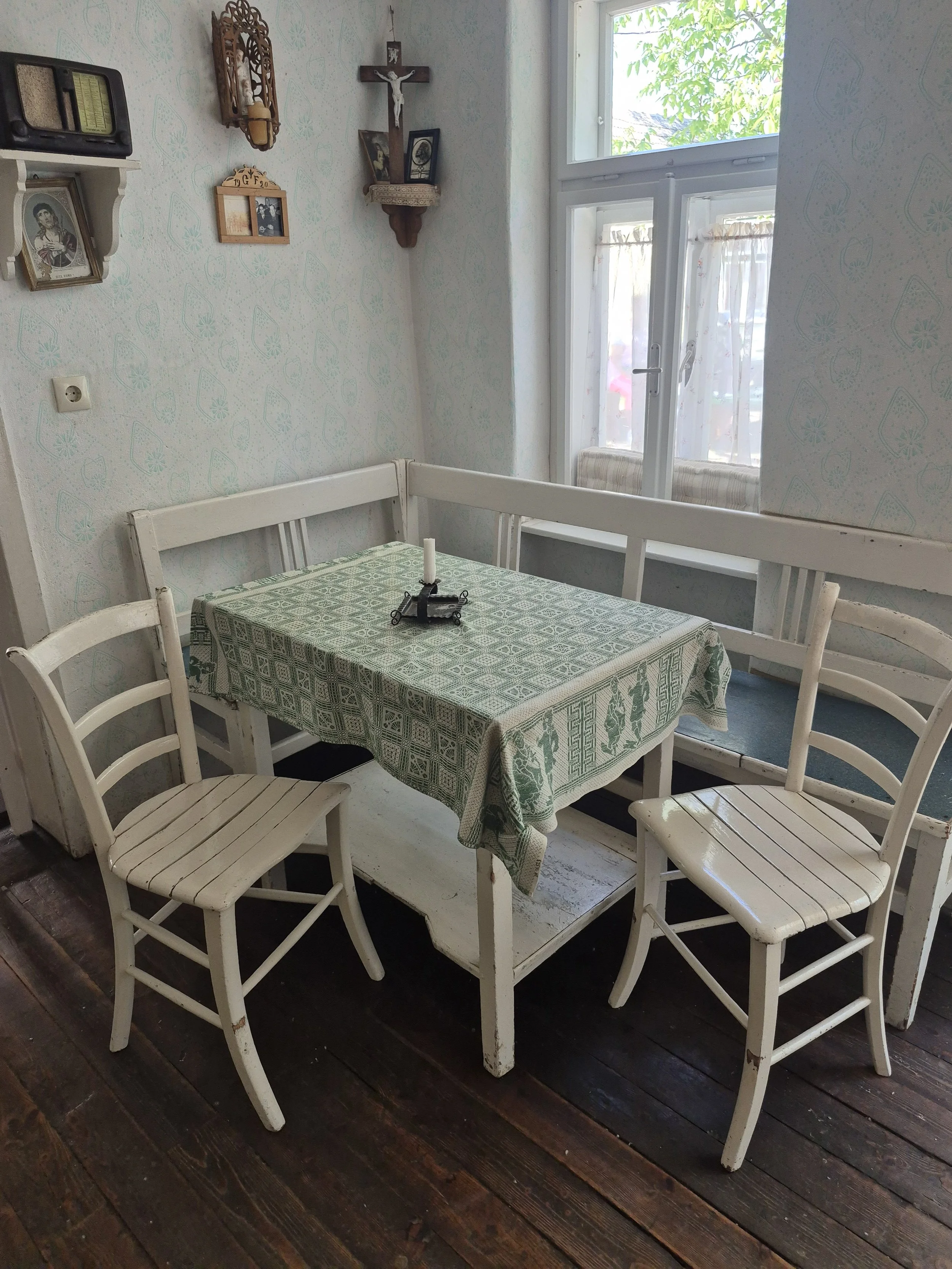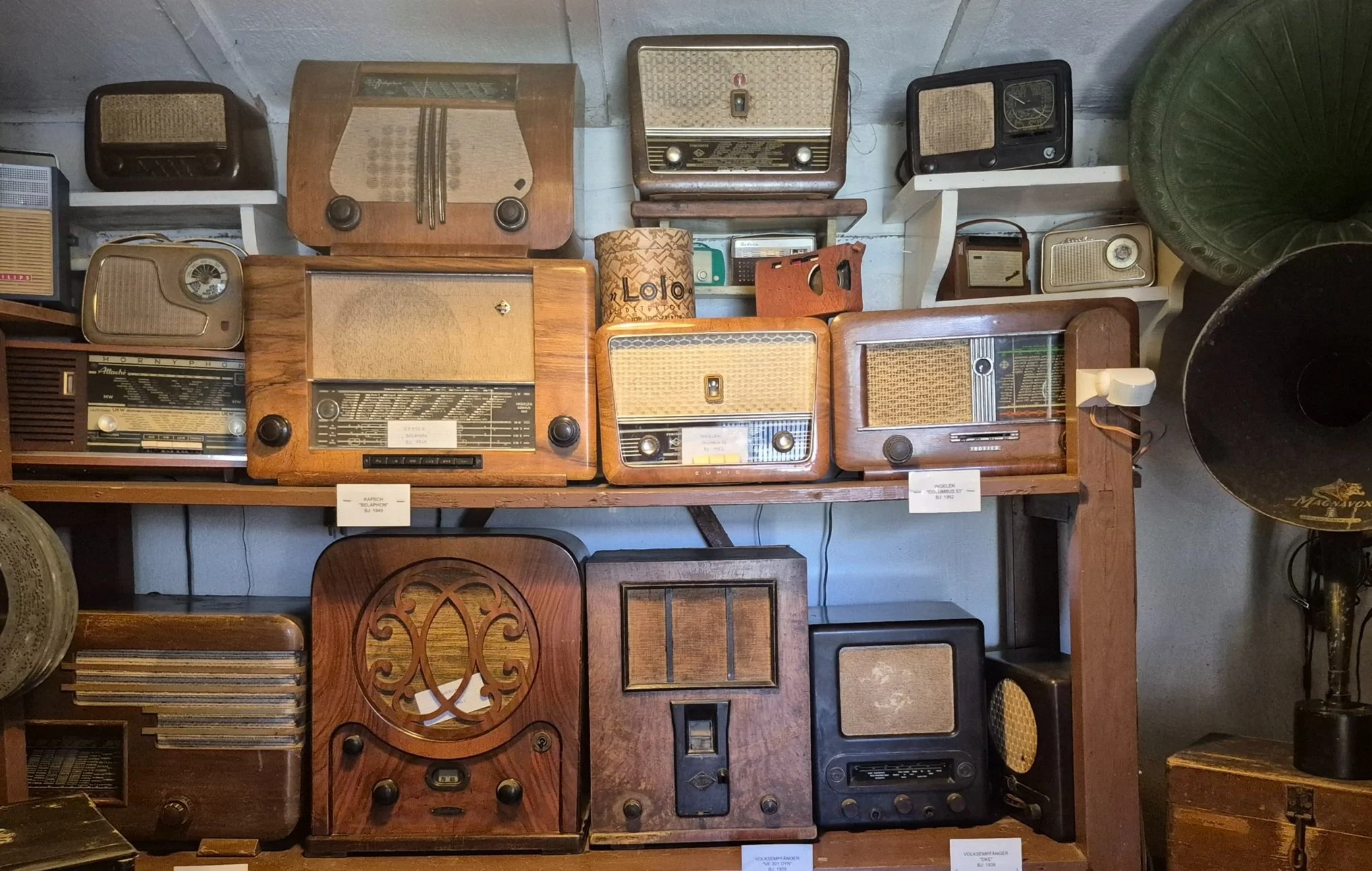The village museum of Mönchhof
Since I had such fond memories of the museum in Niedersulz, I finally wanted to visit the much-praised village museum in Mönchhof.
After a late breakfast and our weekly grocery shopping in the morning, we set off for Burgenland in the early afternoon.
Just 40 minutes later we reached our destination – a long, detailed model village where lovingly restored houses line up to tell their stories from a bygone era.
A walk through a lovingly designed museum village
Right after the entrance, we entered a courtyard dedicated to agriculture and the processing of its produce.
Several rooms displayed old toys – with a note that many children back then hardly had any toys, simply because there was no money.
In the center of the courtyard stood two fully furnished Roma wagons.
In my childhood, my grandmother from Burgenland had told me a lot about the Roma – it was fascinating to now see with my own eyes what I had only heard back then.
Customs station, corner store, and nostalgic cinema
We continued on to the former customs station of Andau.
The plain accommodation of the officers reminded us of the deprivations of past times.
A historic border crossing that could tell of generations of people longing for freedom
We strolled past a very idyllic little pond.
At the end of the pond stood a fisherman's hut.
I was fascinated by how faithfully everything was furnished.
A few steps further we reached an old inn, which is still open today and mainly serves drinks to visitors.
The old menus written in Kurrent script were interesting – the prices listed in Schilling.
In the same building, there was also a small general store.
I vaguely remember these kinds of shops from my childhood, where you could seemingly buy everything. Long ago, these stores fell victim to large supermarkets – a real shame, actually.
Behind the inn/general store, there was a small bowling alley with rather odd-looking balls.
The house next to it was that of the village doctor.
Here the doctor not only practiced, but also lived, and there was a sort of small laboratory as well.
In the same house, the mayor’s office and the post and telegraph office were also located.
A large green area stretched between the different buildings.
Old bicycles stood there as if just parked. Everything appeared very idyllic and romantic.
Life back then must have been much harder than we imagine it today.
In another building, the equipment and uniforms of the volunteer fire brigade were on display. My partner mentioned that he still remembered the uniforms from his own youth, when he himself had been part of the volunteer fire department in his village.
There was even a cinema in the village.
There we saw posters of film stars, many of whom have long since passed away, but whose movies I still enjoy watching today.
There was also a photography studio you could visit.
Seeing the old cameras was an experience in itself.
Living spaces and traditional crafts just like in the old days
Our path led us through a large homestead.
Here you could view numerous living spaces, mostly from the 1950s.
Some of it reminded me very much of my grandma’s apartment in the late 1960s and early 1970s.
The kitchen furnishings, especially the cupboard filled with dishes, were familiar to me from childhood.
In the same homestead, there was also a bakery.
Various loaves of bread were on display, as well as the sales counter.
One room was furnished for the apprentice.
An information board told of the hard life of apprentices, who often didn’t even have the opportunity to learn what they were actually interested in, simply because the parents couldn’t afford the apprenticeship fee.
Our children have it so much easier today – and most of them don’t even appreciate it.
Especially charming was the brass band. When visitors approached, music began to play.
There was also a cozy bench, which I happily used for a short break with musical accompaniment.
An exhibition of old motorcycles especially thrilled my partner.
The adjoining gas station was particularly impressive – two fuel pumps, nothing more.
Unfortunately, the village wine cellar is no longer in operation – a pity, we wouldn’t have minded a sample.
For the first two hours, we were almost alone in the village; only then did it slowly start to fill with visitors.
Idyll between church, cemetery, Stations of the Cross, and wine cellar
Again and again, we came across quiet, green courtyards that radiated a calming peace.
At the end of the village, a small white church stood on a hill.
Via a staircase, one could descend into the impressive crypt.
The interior of the church was also very prettily decorated.
Opposite the church there was a Protestant prayer house, which was much smaller and simpler than the Catholic church.
Behind the church was a lovely little cemetery.
A vineyard with a Stations of the Cross path completed the ensemble.
They even thought to erect a maypole in the village.
From the church, one could reach several barns via an underground corridor.
These contained various agricultural tools, machines, and vehicles.
The path continued past the rectory and a wine cellar.
It was pleasantly cool in this cellar, where numerous barrels and bottles were stored.
In the milk house, we could learn about the significance, storage, and processing of milk.
Cooling, of course, was an important topic in a time before electric refrigerators.
More old crafts and a break at the inn
In the following houses, various crafts were presented: wheelwright, saddler, butcher.
You could see the painter's rollers, which I still remember with a shudder from my childhood, when I wished for white or at least plain-colored walls in my room – but the master painter said that was impossible and ugly, and unfortunately my parents agreed with him.
Today, 90% of the walls in our apartment are white!
One building housed the gendarmerie.
The notions shop was another nostalgic piece from my earliest childhood.
We also discovered a tailor and a hat maker.
After this large tour, we were tired and above all very thirsty, so we now stopped by the cozy inn.
We ordered ham croissants and a slice of marble cake. With that, we each had a small glass of wine.
We sat down in the pleasant garden and enjoyed the relaxed atmosphere.
After this little breather, we visited a cobbler's workshop.
In another row of craftsmen’s houses, we visited a hairdresser, a carpenter, and a cooper.
I was especially fascinated by the old hood dryers, combs, and clips in the hairdresser's shop.
My partner, a trained carpenter, felt most at home in the carpentry workshop and reminisced about his own apprenticeship, which lies several decades in the past.
In the school, on the other hand, I felt at home – even if our modern schools have nothing in common with those of the past, of course.
After that, we were able to visit more living quarters. I always find it particularly interesting to see how people lived in different times.
That’s why these areas are always my absolute favorites.
Now we slowly approached the end of our tour. The last building housed a radio workshop. Some of the devices we used to have at home.
Railway museum with carriages you can enter
Attached to the village museum is also a railway museum.
Of course, as passionate train fans, we absolutely had to pay it a visit.
We saw old carriages that you could actually enter and sit down in.
I was completely in my element.
An old steam locomotive was also on display.
The staff compartments were also very interesting.
The railway museum is very small, but definitely worth a visit – especially if, like us, you’re interested in trains.
Delicious end at the wine tavern
After seeing so much today, we also stopped by a rustic wine tavern.
We ordered the traditional speck, Verhackertes, and blood sausage bread.
The food was simple but excellent. We also tried the regional wine, which was delicious.
This was how we brought this exciting day to a relaxed and cozy close.


